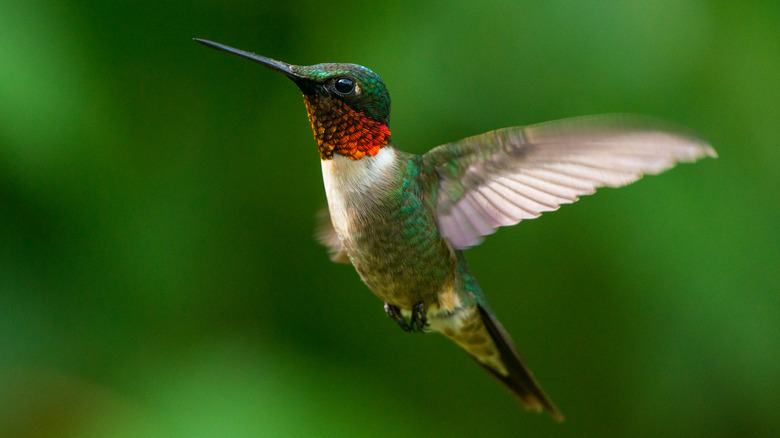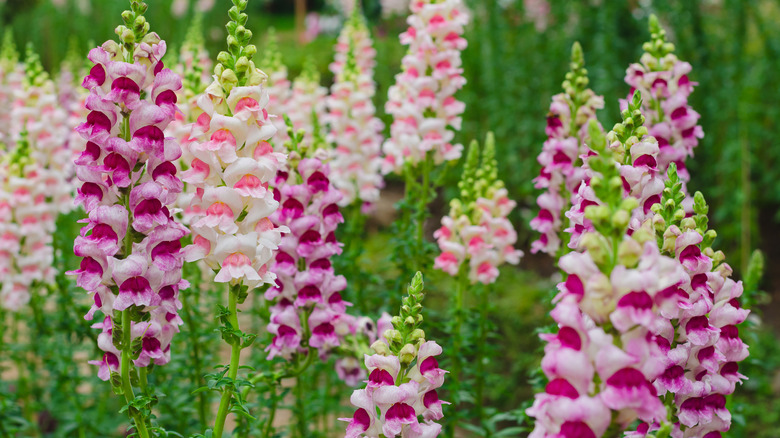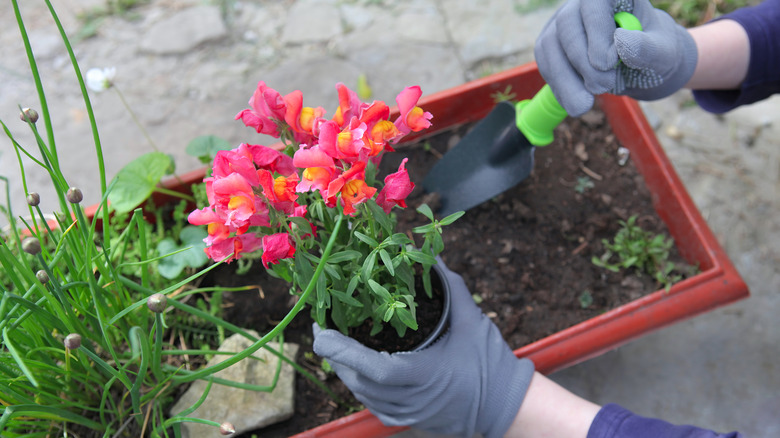This Flower Named After A Mythical Beast Is A Fan-Favorite For Hummingbirds
Hummingbirds, with their seemingly magical speeds and iridescent colors, are truly captivating. It's only fitting that one of their favorite flowers, snapdragon (Antirrhinum majus), should be equally as otherworldly. With its tubular flower shape and delicious nectar, the snapdragon is a plant that seems to belong in a fairy tale, making it a perfect choice for attracting these mesmerizing birds to your yard. Plus, with such a mythical name and long-held associations with spells and enchantments, it seems like a perfect match for the winged creatures.
Hummingbirds live throughout North and South America and can be found in almost every U.S. state. While snapdragons, unlike hummingbirds, are not native to the Americas, they grow well in much of North America, making good short-lived perennials in zones 7 through 10 and thriving as annuals in many colder regions. They may even overwinter in areas as cold as USDA zone 5 as long as they are given some protection. As snapdragons are noninvasive and easy to care for flowers, they can be a great way to add beauty and entice hummingbirds to your yard and garden with little effort.
Growing and caring for snapdragons
While young snapdragon plants can be easily found in most garden centers, the plants can also be grown from seed. If you opt to grow the plants from seed, it's best to start the seeds indoors and transplant them to their outdoor home after two months or so, as the seeds are so small they can easily be washed away if they are direct sown. Instead of burying the seeds, just surface sow them into your seed starting trays, as they need light to germinate. While seed stratification is not necessarily required, chilling the seeds has been shown to improve germination rates.
Once your snapdragons are ready to move outdoors, plant them in well-draining and fertile soil and pick a spot where they'll receive full to partial sun. Take care to harden them off, but you don't necessarily have to wait until after your last frost date, as snapdragons are frost hardy. Snapdragons aren't especially drought or heat tolerant, so be sure to stay on top of watering them, especially once temperatures start to heat up. Just be sure to avoid drenching their leaves and flowers. While overhead watering isn't ideal for any plants, snapdragons are especially prone to developing rust and other fungal diseases.
Using snapdragons in a pollinator garden
Snapdragons don't only attract hummingbirds, they also appeal to butterflies and a variety of different bee species, making them a must-have for pollinator gardens. While tall cultivars of snaps make excellent options for the back and middle of garden beds, reaching heights of 3 feet, shorter dwarf cultivars also exist and are ideal bedding plants for the front of gardens. Many of these dwarf cultivars are less than half a foot tall and, unlike their larger relatives, don't require staking.
Snapdragons are available in a rainbow of shades, from pastels to moody jewel tones to bold primary colors. Some research suggests that the color red helps attract hummingbirds, and blues and purples attract bees. Regardless of your garden's color palette, though, you're sure to be able to find snapdragons to complement it, and the flowers' whimsical and old-fashioned look makes them a perfect addition to gardens with a cottagecore aesthetic.


